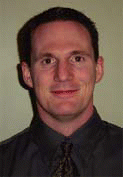Based on polysomnography results, overall success rates for UPPP is 40.7% in unselected patients. This is less than optimal, he noted. UPPP in selected patients improves polysomnography results, he continued.
Explore This Issue
March 2008Higher levels of evidence support variations of UPPP, he continued. One study showed that lateral PP was more successful in improving AHI and sleep parameters compared with UPPP (Cahali. Sleep 2004;27:942-50). A second study showed that transapalatal advancement was superior to UPPP for change in AHI (Woodson. Otolaryngol Head Neck Surg 2005;133:211-17).
There is consistent, but not overwhelming, evidence that UPPP improves survival compared with no treatment. In fact, UPPP improved survival more than CPAP did in studies that analyzed all their CPAP patients, including those who did not use it fully. There is favorable but less convincing evidence that UPPP improves cardiovascular risk and risk of motor vehicle accidents, Dr. Weaver told the audience.
Anatomical factors are predictive for success with UPPP, he continued. Patients with palatal obstruction have improved results compared with patients with tongue obstruction or mixed obstruction. Regarding palatal implants, Dr. Weaver said that there is conflicting evidence about whether palatal implants have any effect in patients with OSA. Palatal implants achieve a small reduction in AHI and a small worsening in apnea index (AI) in highly selected patients, he said. Palatal implants appear to improve polysomnography to a trivial degree, but they improve daytime sleepiness more significantly, he noted.
Hypopharyngeal Surgery
Hypopharyngeal surgery can be considered as a primary or secondary procedure if palatal surgery alone will not achieve the desired results, stated Eric Kezirian, MD, Director of the Division of Sleep Surgery in the Department of Otolaryngology-Head and Neck Surgery at the University of California, San Francisco School of Medicine.
Although several types of procedures are available-including tongue radiofrequency, genioglossus advancement, and maxillomandibular advancement-there is no single best procedure, according to the evidence. There are no randomized controlled trials to compare palatal surgery versus hypopharyngeal surgery, to compare palatal procedures alone versus combined palate and hypopharyngeal surgery, or to compare the different hypopharyngeal surgeries with sufficient numbers of patients. While certain procedures may provide better overall outcomes, evidence-based medicine suggests that these procedures do offer benefits in appropriate patients and that the selection among them must include a physician’s own surgical experience and patient preference, Dr. Kezirian said.
Hypopharyngeal surgery does not have a large number of randomized controlled trials. Therefore, we need to integrate the best evidence with clinical experience and patient preferences. It is difficult to perform randomized controlled trials because these are invasive procedures; blinding is difficult, and enrollment of a sufficient sample size will also be challenging, he stated. It is also unclear whether performing palatal and hypopharyngeal surgery at the same time or in separate procedures would be recommended. Risks may be higher when combining surgeries, but it is not known how this compares to adding the risks of two separate procedures, he stated.

Leave a Reply